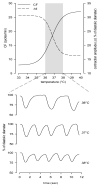Lymphatic Vessels and Their Surroundings: How Local Physical Factors Affect Lymph Flow
- PMID: 33322476
- PMCID: PMC7763507
- DOI: 10.3390/biology9120463
Lymphatic Vessels and Their Surroundings: How Local Physical Factors Affect Lymph Flow
Abstract
Lymphatic vessels drain and propel lymph by exploiting external forces that surrounding tissues exert upon vessel walls (extrinsic mechanism) and by using active, rhythmic contractions of lymphatic muscle cells embedded in the vessel wall of collecting lymphatics (intrinsic mechanism). The latter mechanism is the major source of the hydraulic pressure gradient where scant extrinsic forces are generated in the microenvironment surrounding lymphatic vessels. It is mainly involved in generating pressure gradients between the interstitial spaces and the vessel lumen and between adjacent lymphatic vessels segments. Intrinsic pumping can very rapidly adapt to ambient physical stimuli such as hydraulic pressure, lymph flow-derived shear stress, fluid osmolarity, and temperature. This adaptation induces a variable lymph flow, which can precisely follow the local tissue state in terms of fluid and solutes removal. Several cellular systems are known to be sensitive to osmolarity, temperature, stretch, and shear stress, and some of them have been found either in lymphatic endothelial cells or lymphatic muscle. In this review, we will focus on how known physical stimuli affect intrinsic contractility and thus lymph flow and describe the most likely cellular mechanisms that mediate this phenomenon.
Keywords: extrinsic mechanism; hydraulic pressure; intrinsic contractility; lymph flow; lymphatic vessels; osmolarity; shear stress; tissue temperature.
Conflict of interest statement
The authors declare no conflict of interest.
Figures



References
Publication types
LinkOut - more resources
Full Text Sources
Medical

